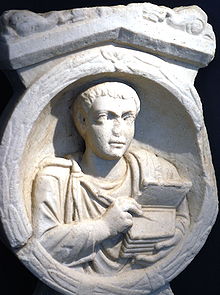Caleb watched as distant figures, shimmering like a mirage from the arid Negeb, gradually assumed familiar shapes, and he waited. It was his lovely daughter, Achsah, with her new husband. She was no longer under his protective care in the family compound near Hebron. She now dwelled with the one who had won her hand by his acts of bravery and courage—Othneil, slayer of giants, conqueror of Debir. Caleb wondered why they were coming.
How it all began[1]
Over forty years before, Caleb, Joshua, and ten others, leaders all of Israel’s twelve tribes, embarked on a reconnaissance of the land of Canaan, one commissioned by the LORD through Moses. Their mission? Spy out the land, and its inhabitants. Were the Canaanites a people strong, or weak? Many, or few? Did they dwell in fortified strongholds, or tents? Was the land fertile? Were there ample forests for Israel’s needs?
It was around the month of Elul, the season for the first grape harvest. What better time to bring back samples of the ripening fruit of the land? Above all, Moses exhorted them to be of good courage. Much depended on their findings, as would soon become evident.
The twelve tribal emissaries set out immediately, and for forty days furtively scouted the land, covering some 300 miles[2] before returning to their launch point, Kadesh-barnea. En route they saw date palms, pomegranates, ripening grapes, all thriving in abundance. There was ample pasture for sheep and cattle, and fields suitable for growing barley and wheat. Olive and fruit trees dotted certain regions of countryside. The coastline provided fishing, and perhaps even dye works. Canaan, indeed, was full of resources and promise.
Its inhabitants, however, were an entirely different matter—especially the hulking sons of Anak!
An ill wind
“We went to the land where you sent us. It truly flows with milk and honey,” the returning spies reported to eager ears. “Nevertheless the people who dwell in the land are strong; the cities are fortified and very large; moreover, we saw the descendants of Anak there.” Amalekites, Hittites, Jebusites, Amorites, and Canaanites—all formidable and well-armed—would have to be dealt with as well.
Anak! Apprehension swirled through the ranks of Israel. Caleb quieted the people, then exhorted them, saying, “Let us go up at once and take possession, for we are well able to overcome it.” The agitators would have none of it, and retorted, “We are not able to go up against the people, for they are stronger than we. . . . The land through which we have gone as spies is a land that devours its inhabitants, and all the people whom we saw in it are men of great stature. There we saw the giants (the descendants of Anak came from the giants); and we were like grasshoppers in our own sight, and so we were in their sight.”
With weeping and wailing, Israel turned on Moses and Aaron, demanding new leaders, and refusing to enter Canaan. Moses and Aaron, in shock and horror, fell on their faces before the unruly assembly, undoubtedly recognizing a grievous affront to the LORD, their Deliverer.
Only two of the twelve, Joshua and Caleb, confronted the growing spirit of revolt, warning the tribes not to rebel against the Lord. They implored them rather to trust that “if the Lord delights in us, then He will bring us into this land and give it to us . . . .” Those words only moved the mob to violence, and cries of, “Stone them! Stone them!” filled the air. Little did the tribes of Israel realize that their own fates were sealed in the wake of that murderous intent. The LORD had had enough!
And the LORD spoke to Moses and Aaron, saying, “How long shall I bear with this evil congregation who complain against Me? I have heard the complaints which the children of Israel make against Me. Say to them, ‘As I live,’ says the LORD, ‘just as you have spoken in My hearing, so I will do to you: The carcasses of you who have complained against Me shall fall in this wilderness, all of you who were numbered, according to your entire number, from twenty years old and above. Except for Caleb the son of Jephunneh and Joshua the son of Nun, you shall by no means enter the land which I swore I would make you dwell in. But your little ones, whom you said would be victims, I will bring in, and they shall know the land which you have despised. But as for you, your carcasses shall fall in this wilderness. And your sons shall be shepherds in the wilderness forty years, and bear the brunt of your infidelity, until your carcasses are consumed in the wilderness. According to the number of the days in which you spied out the land, forty days, for each day you shall bear your guilt one year, namely forty years, and you shall know My rejection. I the LORD have spoken this. I will surely do so to all this evil congregation who are gathered together against Me. In this wilderness they shall be consumed, and there they shall die'”[3]
To be continued…








